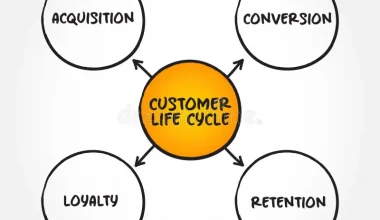Effective leadership is essential to the success of any organization. Without it, a company risks low morale and constant turnover. Setting measurable, practical leadership goals is one method to aid in your leadership development. Your objectives ought to be concentrated on strengthening your assets while addressing your flaws. The leader is always responsible for the team’s efforts. A leader is someone who has the ability to inspire others, solve problems even in the most challenging circumstances, and create objectives that can be accomplished by a team in the allotted amount of time. The ability to create goals (leadership goals) effectively may be a sign of a leader’s professionalism because it is one of their primary responsibilities.
Leadership Goals
Aspiring leaders usually establish goals for improving communication and fostering healthy relationships since these two things contribute to the creation of productive, joyful, and healthy work environments. As a leader, you should constantly evaluate your abilities and search for opportunities to advance. Perhaps you are great at meeting data organization but might improve your public speaking abilities, or perhaps you are excellent at resolving conflicts but could still be a better active listener.
Setting goals is essential for good leadership that can stay up with changing business environments. Your team and your company will gain if you continually establish goals for your leadership style. It’s crucial to customize your leadership goals because your leadership skills and limitations could not be the same as those of the next person. Making the time to sit down and write down your goals is beneficial. The first step is to determine your strengths and shortcomings. Finally, pick one or two shortcomings that you wish to work on at a time.
Free Tips for Setting Leadership Goals
When a task is given to a leader, it is his obligation to establish rules that provide the best outcomes while also giving team members tasks that may bring out the best in them and help the team reach its goal in the most effective way.
As the leader, you must take into account the following thoughtful goal-setting advice in order to meet your client’s requirements for profitability:
#1. Provide Constructive Criticism That Encourages Growth
Businesses that encourage open communication and staff development frequently do so through feedback. As a leader, you may inspire your team to achieve excellence by giving them constructive criticism that emphasizes growth rather than error. Offering someone criticism goes beyond just critiquing their conduct; when done properly, it may encourage growth and development. Establish a setting where your team can trust the purpose of your feedback.
#2. Be Open to Evolution and Development
Make it a point to be flexible and eager to learn rather than presuming you know everything. Your ability to successfully manage your business is enhanced by your openness to change. This is particularly crucial during times of economic upheaval when you might need to modify the direction of your resources or business activities to account for the shift in the economy. Throughout time, you will flourish if you maintain an open mind to new possibilities and business models.
#3. Long-Term Objectives
A leader must always start with the end in mind when setting goals and objectives because they must take the end-result into account. Making the team aware of the goal in this way can help you stay focused on getting the desired results. The team looks up to a leader who sets long-term objectives, and the team members are aware of his or her motivations behind each decision the leader makes.
It may even occur that numerous minor initiatives are combined to create a sizable plan. Under such circumstances, you should focus on the long-term objectives while not ignoring the short-term goals that will lead to the project’s completion.
Leadership Goals Example
#1. Develop Your Listening Skills
In addition to giving advice, effective leaders also listen, which is why developing active listening skills is a key leadership objective. The desire of workers is to feel valued and heard. You can learn about fresh viewpoints and uncover concepts to advance your company by listening to your team and your coworkers. Giving someone your full, undivided attention while they talk is known as active listening. You’re not just hearing what they say; you’re actively processing it, paying close attention to the speaker’s intention, message, and attitude.
#2. Build Posture and Charisma
Acting with assurance is a good example of a leadership goal. This entails having a presence in the front of the room to be effective. Alternatively, insignificant meetings, at the head of the table demonstrate composure even in the most trying circumstances.
#3. Examine Yourself and Your Malfunctions
Even though they (leaders) challenge the current quo. Certainly, there will always be sporadic failures. Effective leaders, however, accept failure. Because of it, they grow. And become a better leader because of it. This is one more excellent illustration of a leadership aim.
#4. Cultivate Candor
A strong leader accepts responsibility for their own actions and is transparent and honest with their team. At times of ambiguity, trust between management and employees is crucial, which is established as a result.
SMART Leadership Goals
SMART leadership goals are goals that are specific, measurable, attainable, relevant and timely
S- specific
M- measurable
A- attainable
R- relevant
T- timely
#1. Specific
What precisely is your aim as a leader? In this situation, stating that your leadership aim is to be a better listener is appropriate but too nebulous. It is far more specific to indicate that you want to cut down on the number of times your co-workers have had to repeat themselves by any percentage.
#2. Measurable
Your objectives should be well-defined, and you should use quantitative, quantifiable indicators to gauge their success. To measure your goals, you must have clear-cut criteria to weigh them and identify which ones should be given top priority.
#3. Attainable
Unrealistically high goals can result in exhaustion, project delays, diminished enthusiasm, and significant personnel retention. Setting goals also entails doing something that is your capacity and not too ambiguous, meanwhile, your goals should be precise and simple for easy grasp.
#4. Relevant
Your objectives are meant to be relevant and effective, not antiquated. Equally important to take into consideration the meaning of your objectives and how you tend to achieve that, not only but also, how you are able to convey information and define your goal parameters matter a lot.
#5. Timely
Set a realistic deadline for yourself to accomplish your objectives. Procrastination is a breakdown you totally must avoid. Avoid fear in all circumstances because “fear is the sand in the machinery of life.”
Team Leadership Goals
Understanding the intended outcomes and the time required for the team to achieve them is essential while working as a team. But it’s equally critical to understand the plan for achieving the chosen objectives. The creation of this roadmap is the responsibility of a leader.
A thorough strategy enables you to more clearly comprehend what you have completed and what remains to be done. Also, it is crucial for the majority of employees to be able to rejoice when specific jobs are completed. A leader should make every effort to maintain a good atmosphere because it can function as the ideal motivator for the team.
We conducted a brief study on how to develop goals and objectives for better leadership, and we want to share the findings with you.
#1. Exchange of Experience
Although it may appear insignificant, this aspect has a significant impact on goal setting. The issue is that you can adjust your goal-setting technique if your team is capable of more. As you share your knowledge, your team becomes more competent, which allows each member to produce better outcomes and exert more effort toward achieving predetermined goals.
#2. Crowdsource
Maybe you need some motivation and encouragement from your team if you have trouble formulating objectives that are realistic and attainable. Occasionally, you might not see things that are evident while your team members could consider them to be important to your company. Yet, occasionally no one picks up on the obvious errors, in which case the brainstorming exercise is helpful. People frequently come up with excellent ideas on the spur of the moment, and it is simple to overlook them, so pay close attention to what your team members have to say and be sure to write it all down.
#3. Constructively Oriented
You must refine your strategic thinking if you want to make goals that will be successful. This makes it easier to anticipate the results of your choices and activities and to comprehend precisely how they affect the end result. Moreover, strategic thinking enables comprehension of all assignments.
Examples of Leadership Goals for Performance Review
Potential leaders may concentrate on acquiring and honing specific abilities and character qualities that will enable them to be successful as team leaders, managers, and supervisors. Occasionally, as a manager or human resources consultant, you might finish an employee performance evaluation. You may recognize outstanding leaders and develop leadership qualities in your team members by including feedback regarding a person’s leadership abilities, characteristics, or performances.
Creating performance review goals for your early career employees is a very unique and personal task. It is really better to help them develop acceptable goals for themselves. The correct ingredients to add to the recipe, therefore to phrase, vary greatly according to the demands and goals of the individual. Even so, your main priority is to create a unique success blueprint or template to guide your team members in finding new ways to boost their personal productivity, which, of course, enhances departmental and ultimately corporate performance.
Examples of career objectives for performance review
1. Skills in Change Management and Adaptability
2. Time management and Compliance
3. Confidentiality
4. Reliability
5. Resolving arising conflicts
6. Communication
7. Client’s satisfaction
8. Uniqueness and innovation
9. Diversification
10. Honesty and Trust-worthy
11. Listening skills
12. Motivation
13. Being discreet
What Are Leadership Goals Examples?
It takes a lot of work to be a leader. To pursue it, you must have dedication, equilibrium, and comprehension. But it is your duty as a leader to provide the best possible direction for a team. Every leader should have a set of leadership objectives to work toward, even if they have a special set of management skills that set them apart from others.
- Learn to listen
- Effective communication
- Create coaching platforms
- Effective time management
- Build strategic connections
- Be flexible to change
- Learn to accommodate
What Are Some SMART Leadership Goals?
Aspiring leaders usually establish goals related to better relationships and communication since these two factors contribute to the creation of positive, professional, and secure work environments. Some SMART leadership goals are as follows:
- Work on your confidence level
- Seek for development
- Cultivate emotional intelligence
- Accept constructive criticism
- Practice transparency
- Be comfortable delegating tasks
What Is the Most Important Goal of a Leader?
A leader should set a set of objectives as their first goal. A quantifiable goal must be set for oneself and the team so that everyone can work together to achieve it. Plan the most effective route and assess your leadership performance.
What Are the 5 Smart Goals Examples?
SMART goals are professional goals a leader sets to reach an attainable height. Some SMART goals example are:
- Specific
- Measurable
- Attainable
- Relevance
- Time-bound
What Are Professional Goals?
Professional goals, also known as work goals, are targets you establish for yourself to achieve in order to advance in your job. You can decide to set short-term professional objectives like being certified in your sector, connecting with industry experts, or hiring a coach
What Makes a Good Leader?
Integrity, self-awareness, courage, respect, empathy, and thankfulness are qualities that make for a good leader. They should be developing their agility and flexing their influence while successfully communicating and delegating. Look for ways that all levels of your business may acquire and develop these essential leadership skills.
Bottom Line
The leadership of your company establishes the working environment and expectations for employees. Since employees look to corporate executives for guidance on how to conduct themselves, your organization’s initiatives will be imitated by employees across the board.
Related Posts
- HOW TO BE A LEADER: Becoming the Leader of Your Dreams
- LEADERSHIP DEVELOPMENT: Process, and Strategies
- 6 Elements for Effective Business Leadership






